 |
|
Ancient Theater in Turkey Nysa |
||||||||||||
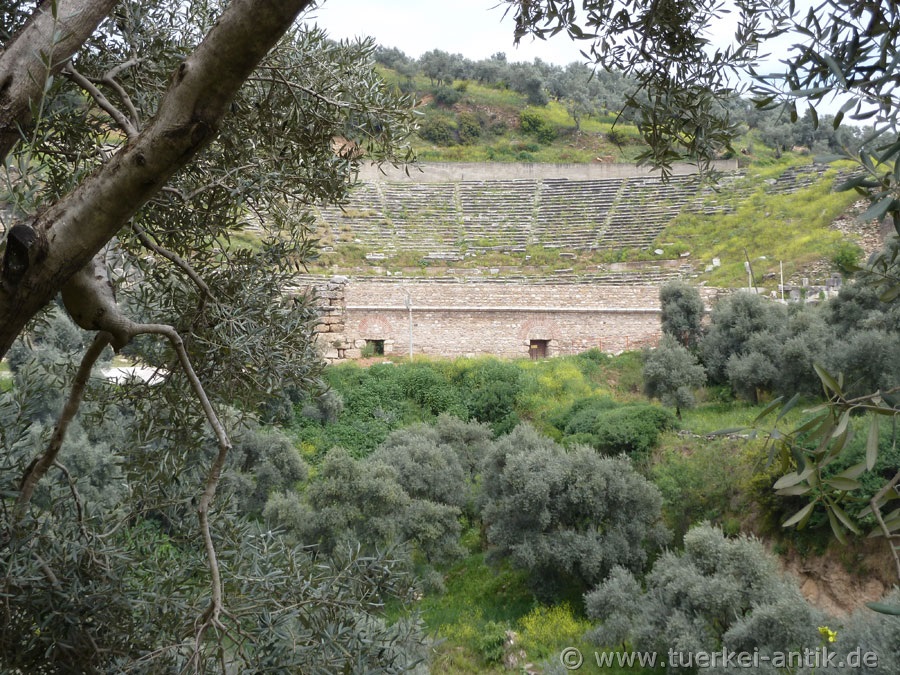 |
|
|||||||||||
|
||||||||||||
|
The Roman theatre of Nysa was probably built in the 1st century BC. It leans on a steep mountain slope. The sides of the cavea were made of masonry. In the second century A.D. the stage was extended. A third reconstruction phase can be determined for the period around 180 - 200 AD. Inscriptions found in the theatre prove that the building was in use until the fifth / sixth century AD. |
||||||||||||
| The history of Nysa: | ||||||||||||
|
The name of the town allegedly goes back to Nysa, an otherwise unknown wife of Antiochos I, or can rather be traced back to Nysa, the nurse of Dionysos. In ancient times, Nysa was regarded as one of the places where Dionysus was brought up. It is unclear whether the city was created by synoikismos (merging several villages into one city) of the place Athymbra with the two neighbouring places Athymbrada and Hydrela. Since the 3rd century B.C. it was selective. The name Nysa was used since the 2nd century BC. In the imperial period Nysa was known as a centre of scholarship, the historian Strabon was educated here around 50 BC. The Stoic Apollonius and the homer philologist Menekrates came from Nysa. In late antiquity, Nysa was a bishop's seat in Eparchia Asia. Nysa owes its prosperity in the imperial period to the sanctuary of Pluton and Kore in Acharaka, 4 km to the west, with its famous sulphur springs. The urban area is divided into two by a stream gorge. The bridge of Nysa, a 100-metre-long superstructure of the deep stream gorge, which served as a substructure for the theatre forecourt and is regarded as the second longest of its kind in antiquity, is particularly worth mentioning in terms of archaeological remains. In front of the late Hellenistic-Roman theatre, on the left side of the gorge, there are the still unexcavated remains of an amphitheatre. Only a few rows of seats, mostly overgrown with grass, have survived. According to the latest findings, however, the oval ground plan is a stadium. In the 1960s, excavations of the theatre and the Bouleuterion were carried out by the museum of İzmir. From 1982-1988 the museum of Aydın extended the excavations in the theatre. A team from Ankara University has been digging and reconstructing various sites since 1990. The library has been excavated since 2002 by archaeologists from the University of Freiburg (Germany). |
||||||||||||
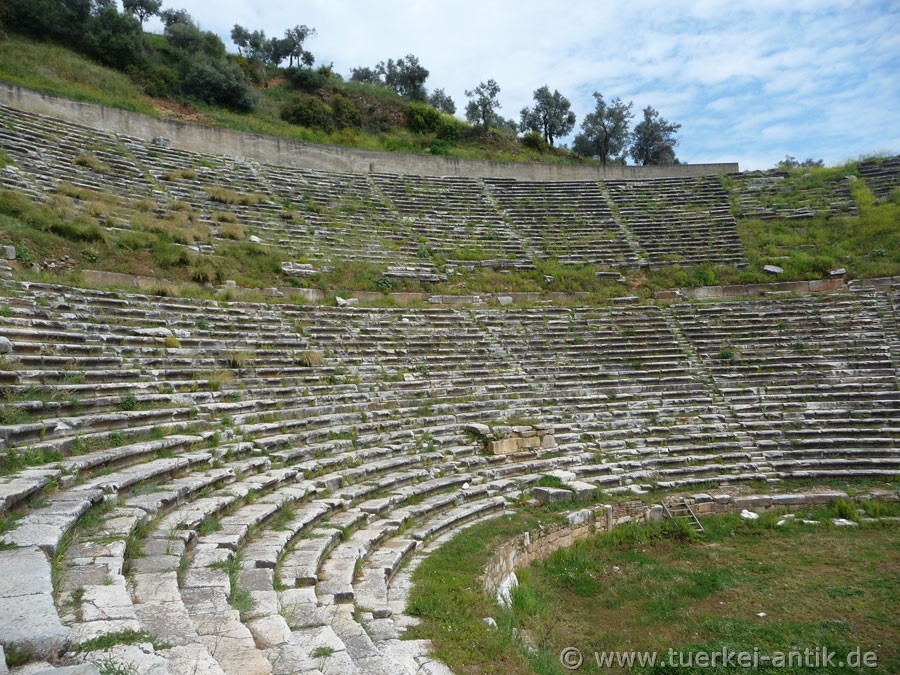 |
||||||||||||
|
|
||||||||||||
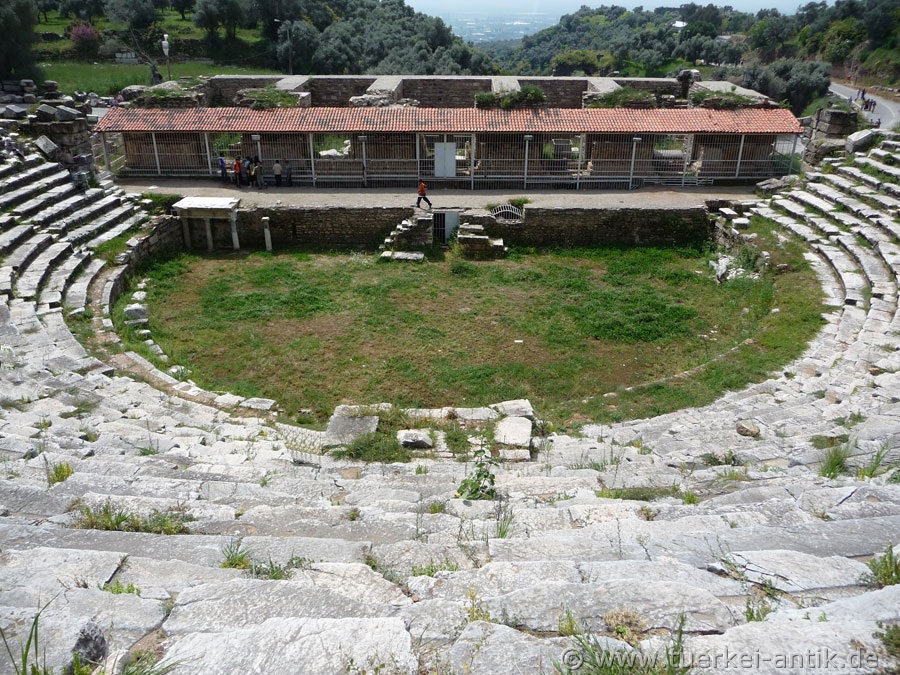 |
||||||||||||
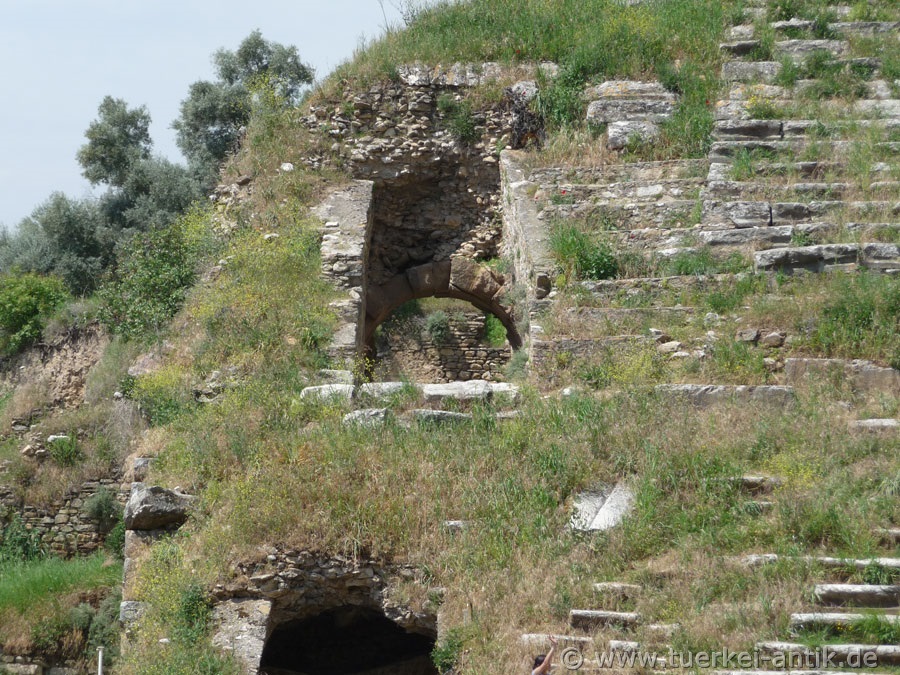 |
||||||||||||
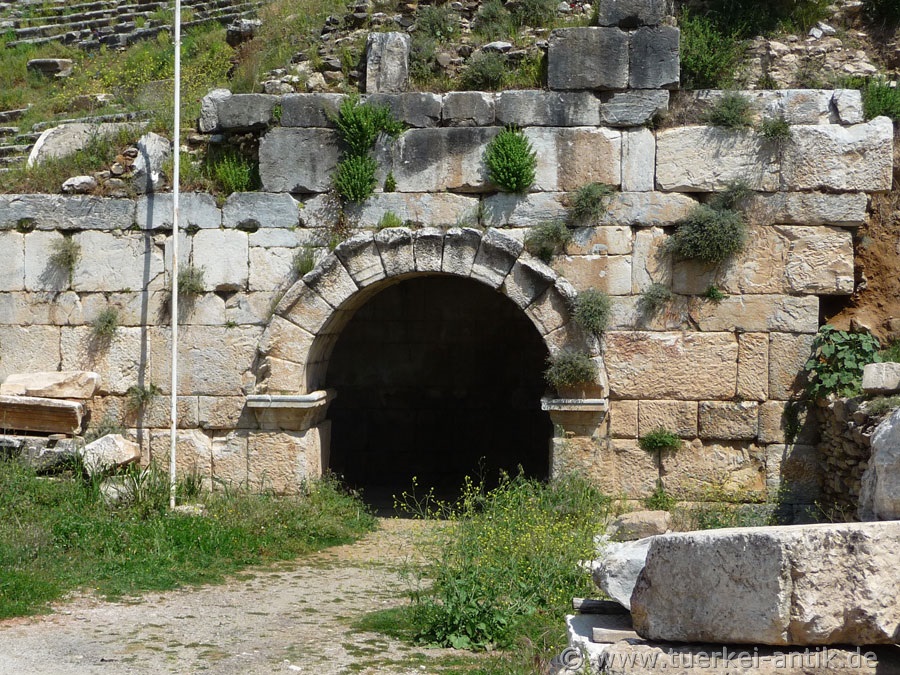 |
||||||||||||
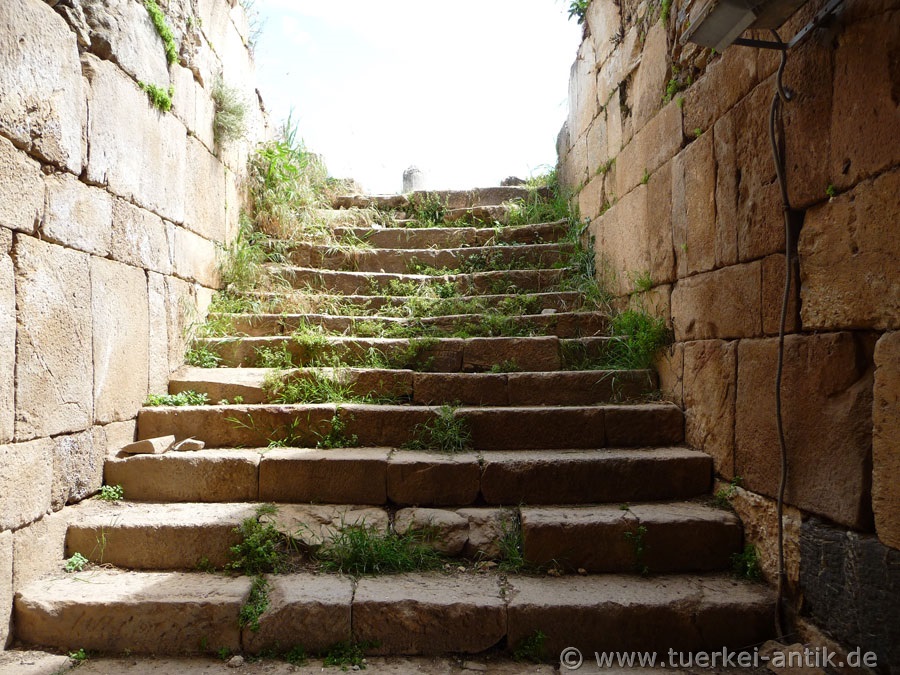 |
||||||||||||
| Photos: @chim, Jürgen P. | ||||||||||||
| Translation aid: www.DeepL.com/Translator | ||||||||||||
| Source: Wikipedia and others | ||||||||||||
|
|
||||||||||||

